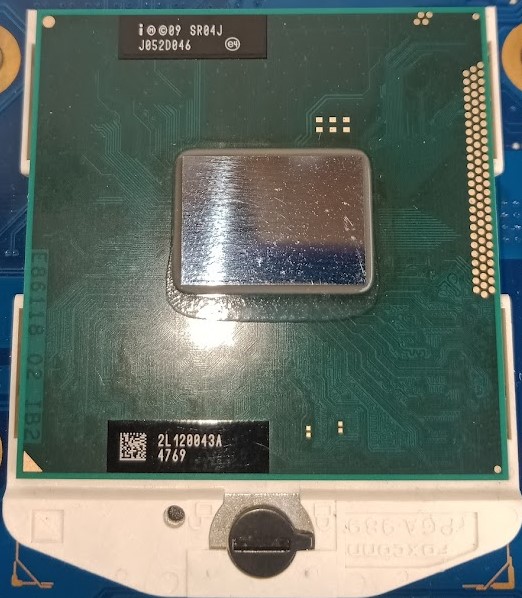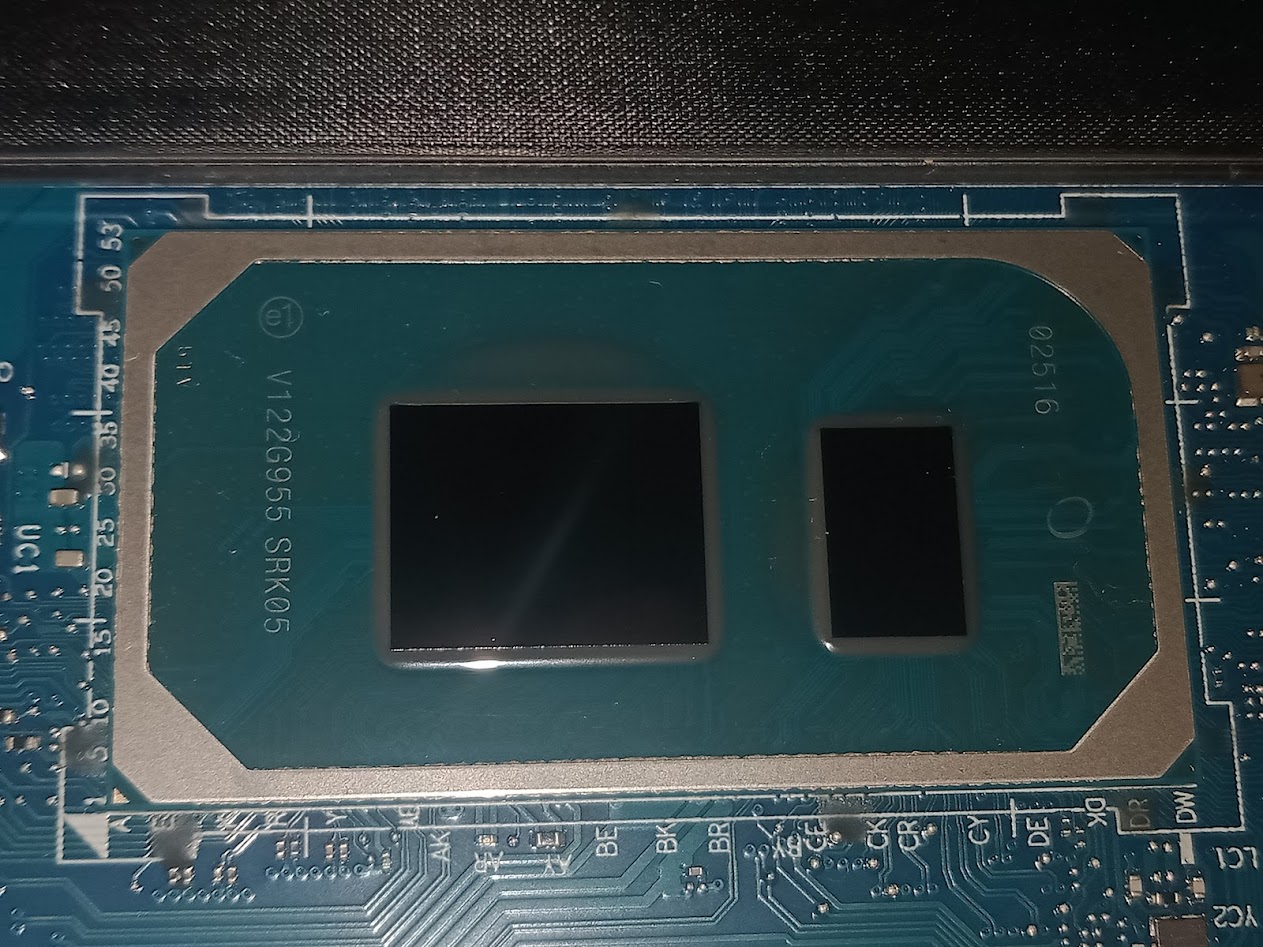Comparing: Intel Core i3 2330M vs Intel Core i5 1135G7
In this comparison, we analyze two Processors: Intel Core i3 2330M and Intel Core i5 1135G7, using synthetic benchmark tests to evaluate their overall performance. This side-by-side comparison helps users understand which hardware delivers better value, speed, and efficiency based on standardized testing. Whether you're building a new system or upgrading an existing one, this benchmark-driven evaluation offers valuable insights to guide your decision.
Specification Comparison Table
This specification comparison presents technical details of several devices or components to help you understand the key differences between each option. Use this table as a reference to determine which device best suits your needs.
| Specification | Intel Core i3 2330M | Intel Core i5 1135G7 |
|---|---|---|
| Architecture | x86 | x86 |
| Technology | 32 nm | 10 nm |
| Clock | 2.2 GHz - - | 2.4 GHz - 4.2 GHz |
| Core/Thread | 2 / 4 | 4 / 8 |
| Segmen | Mobile | Mobile |
Submission Comparison Table
This submission comparison table displays the number and details of benchmark data submissions from various devices or components. This information helps you understand the performance based on the benchmarks that have been tested, as well as providing an overview of the consistency and popularity of the available benchmark results.
| No. | Benchmark Software | Intel Core i3 2330M | Intel Core i5 1135G7 |
|---|---|---|---|
| 1 | Cinebench - 2003 |
1067 cb |
4548 cb |
| 2 | Cinebench - R11.5 |
1.95 pts |
10.37 pts |
| 3 | Cinebench - R15 |
163 cb |
936 cb |
| 4 | Cinebench - R20 |
413 pts |
2195 pts |
| 5 | Geekbench3 - Multi Core |
3652 points |
17993 points |
| 6 | Geekbench3 - Single Core |
1718 points |
4933 points |
| 7 | Geekbench4 - Multi Core |
4322 points |
19133 points |
| 8 | Geekbench4 - Single Core |
2239 points |
6098 points |
| 9 | Geekbench5 - Multi Core |
936 points |
4699 points |
| 10 | Geekbench5 - Single Core |
410 points |
1403 points |
| 11 | PiFast |
34sec, 710ms |
15sec, 570ms |
| 12 | SuperPi - 1M |
18sec, 143ms |
8sec, 157ms |
| 13 | SuperPi - 32M |
16min, 54sec, 925ms |
7min, 8sec, 285ms |
| 14 | wPrime - 32M |
23sec, 73ms |
6sec, 334ms |
| 15 | wPrime - 1024M |
11min, 51sec, 960ms |
3min, 18sec, 987ms |
Submission Comparison Chart
This chart visualizes the benchmark scores comparison between two hardware devices based on submitted data.
Media Gallery
A collection of photos of tested hardware. These images can help you identify the physical form, model, and variant of the hardware in question. These photos are from our own documentation, and if they are not available we may not be able to document them.
About Hardware Intel Core i3 2330M
The Intel Core i3-2330M is a dual-core mobile processor launched in 2011 as part of Intel’s second-generation Sandy Bridge lineup. Designed for mid-range laptops, this processor features 2 cores and 4 threads thanks to Intel Hyper-Threading Technology, allowing it to handle light to moderate multitasking workloads efficiently. Operating at a fixed clock speed of 2.2 GHz and built on the 32nm process, the i3-2330M does not include Intel Turbo Boost, which limits its ability to dynamically increase performance under heavier loads, but it remains a solid choice for everyday use.
With a TDP of 35W, the i3-2330M balances power consumption and performance reasonably well for its era. It integrates Intel HD Graphics 3000, a GPU with a base clock of 650 MHz and a dynamic frequency up to 1.1 GHz. While not designed for modern gaming or demanding graphic applications, this integrated GPU handles HD video playback, basic 3D rendering, and older or lightweight games at low settings with relative ease. Users looking for casual computing and multimedia playback will find it sufficient.
In real-world usage, the Core i3-2330M performs well for standard computing tasks such as web browsing, streaming, office productivity (e.g., Word, Excel), and simple photo editing. Its Hyper-Threading capabilities give it a performance edge over older dual-core processors that lack thread duplication. However, the lack of Turbo Boost and a relatively low base frequency mean that it can struggle under CPU-intensive workloads like video rendering or large spreadsheet processing, especially when compared to more modern CPUs.
This specific configuration was tested on a SAMSUNG 300E4Z, a laptop originally shipped with an Intel Celeron B815 processor but later upgraded to the i3-2330M for better performance. With 4GB of DDR3 dual-channel memory and Windows 7 installed, the system runs smoothly for basic daily use, making the i3-2330M a practical upgrade option for budget-conscious users seeking improved performance without replacing their entire system.
Hardware Detail:
Device: SAMSUNG 300E4Z (This device originally used Celeron B815 which was upgraded to i3 2330M.)
RAM: 4GB DDR3 Dual Channel
OS: Windows 7
Friday, 05 February 2021 15:48:13 | Update: 1 month ago
About Hardware Intel Core i5 1135G7
The Intel Core i5-1135G7 is a quad-core mobile processor introduced in late 2020 as part of Intel’s 11th generation Tiger Lake lineup. Designed for thin and light laptops, this CPU delivers a strong balance of performance, power efficiency, and modern features, making it a popular choice for both casual users and professionals. Featuring 4 cores and 8 threads through Hyper-Threading Technology, it operates at a base clock of 2.4 GHz and can reach up to 4.2 GHz with Intel Turbo Boost, ensuring smooth multitasking and snappy responsiveness for day-to-day applications.
Built using Intel’s advanced 10nm SuperFin process, the i5-1135G7 offers improved efficiency and thermal performance over previous 14nm generations. With a configurable TDP ranging from 12W to 28W, OEMs can adjust the performance envelope depending on the device’s thermal design. The standout feature of this processor is its integrated Intel Iris Xe Graphics, equipped with 80 Execution Units and a dynamic frequency of up to 1.3 GHz. Compared to older Intel UHD Graphics, Iris Xe brings a massive leap in performance, capable of handling casual gaming, 4K video playback, and GPU-accelerated workloads like video rendering or image editing.
In benchmark tests such as Cinebench R23, the i5-1135G7 scores around 5661 points (multi-core) and 1334 points (single-core), showcasing excellent performance for a low-power chip. These scores reflect its capability to handle modern productivity software, web-based workflows, and even creative tools like Adobe Photoshop or Premiere Pro though for heavier workloads, a higher-end CPU may still be recommended.
Real-world performance testing was done on a Lenovo IdeaPad Slim 3i 14ITL6, a budget-to-midrange laptop equipped with 12GB DDR4 3200MHz dual-channel memory (8+4 configuration). This setup, combined with Windows 10 and Windows 11 22H2, allows the i5-1135G7 to fully utilize its integrated GPU and high-speed memory interface for a snappy and responsive user experience.
Whether you're a student, a professional, or a casual user looking for a capable, energy-efficient processor, the Intel Core i5-1135G7 stands out as one of the best value choices in the ultrabook category.
Hardware Detail:
Device: Lenovo IdeaPad Slim 3i 14ITL6
RAM: 12GB DDR4 3200MHz Dual Channel (8+4)
OS: Windows 10, Windows 11 22H2
Friday, 06 August 2021 04:34:04 | Update: 1 month ago






